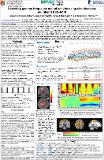Files in this item
Detecting gamma frequency neural activity using simultaneous multiband EEG-fMRI
Item metadata
| dc.contributor.author | Uji, Makoto | |
| dc.contributor.author | Wilson, Ross | |
| dc.contributor.author | Francis, Susan | |
| dc.contributor.author | Mullinger, Karen | |
| dc.contributor.author | Mayhew, Stephen | |
| dc.date.accessioned | 2018-03-26T16:30:10Z | |
| dc.date.available | 2018-03-26T16:30:10Z | |
| dc.date.issued | 2017-06-26 | |
| dc.identifier | 252085293 | |
| dc.identifier | 345f213b-82d2-4849-acff-1f07c0368bf9 | |
| dc.identifier.citation | Uji , M , Wilson , R , Francis , S , Mullinger , K & Mayhew , S 2017 , ' Detecting gamma frequency neural activity using simultaneous multiband EEG-fMRI ' , Organization for Human Brain Mapping , Vancouver , Canada , 25/06/17 - 29/06/17 . < https://ww5.aievolution.com/hbm1701/index.cfm?do=abs.viewAbs&abs=2230 > | en |
| dc.identifier.citation | conference | en |
| dc.identifier.other | ORCID: /0000-0002-9445-6353/work/43150051 | |
| dc.identifier.uri | https://hdl.handle.net/10023/13020 | |
| dc.description.abstract | Synchronization of gamma frequency (>35Hz) EEG activity is linked to cognitive and sensory behaviour as well as being widely cited as the closest neuronal correlate of the BOLD fMRI signal[1]. However, the majority of gamma-BOLD studies were conducted in the visual[2,3] or auditory[4,5] modalities, therefore a deeper understanding necessitates extension to the motor domain. Simultaneous EEG-fMRI is an ideal method to investigate gamma-BOLD correlates non-invasively in humans, however, residual gradient artefacts typically obscure gamma frequency EEG activity when acquired with fMRI. Accelerated fMRI methods such as multiband (MB)[6,7] allow whole-brain coverage in a sparse fMRI scheme which incorporates MR gradient “quiet periods” thus potentially useful to overcome EEG gradient artefacts during fMRI acquisition | |
| dc.format.extent | 1134544 | |
| dc.language.iso | eng | |
| dc.subject | RC0321 Neuroscience. Biological psychiatry. Neuropsychiatry | en |
| dc.subject.lcc | RC0321 | en |
| dc.title | Detecting gamma frequency neural activity using simultaneous multiband EEG-fMRI | en |
| dc.type | Conference poster | en |
| dc.contributor.institution | University of St Andrews. School of Psychology and Neuroscience | en |
| dc.description.status | Peer reviewed | en |
| dc.identifier.url | https://ww5.aievolution.com/hbm1701/index.cfm?do=abs.viewAbs&abs=2230 | en |
This item appears in the following Collection(s)
Items in the St Andrews Research Repository are protected by copyright, with all rights reserved, unless otherwise indicated.

